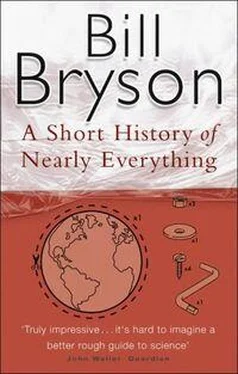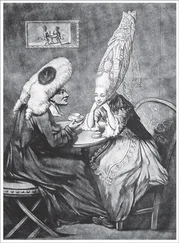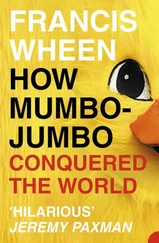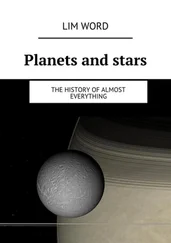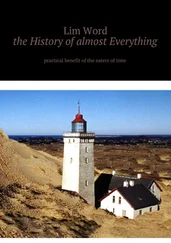Owen was not an attractive person, in appearance or in temperament. A photograph from his late middle years shows him as gaunt and sinister, like the villain in a Victorian melodrama, with long, lank hair and bulging eyes-a face to frighten babies. In manner he was cold and imperious, and he was without scruple in the furtherance of his ambitions. He was the only person Charles Darwin was ever known to hate. Even Owen’s son (who soon after killed himself) referred to his father’s “lamentable coldness of heart.”
His undoubted gifts as an anatomist allowed him to get away with the most barefaced dishonesties. In 1857, the naturalist T. H. Huxley was leafing through a new edition of Churchill’s Medical Directory when he noticed that Owen was listed as Professor of Comparative Anatomy and Physiology at the Government School of Mines, which rather surprised Huxley as that was the position he held. Upon inquiring how Churchill’s had made such an elemental error, he was told that the information had been provided to them by Dr. Owen himself. A fellow naturalist named Hugh Falconer, meanwhile, caught Owen taking credit for one of his discoveries. Others accused him of borrowing specimens, then denying he had done so. Owen even fell into a bitter dispute with the Queen’s dentist over the credit for a theory concerning the physiology of teeth.
He did not hesitate to persecute those whom he disliked. Early in his career Owen used his influence at the Zoological Society to blackball a young man named Robert Grant whose only crime was to have shown promise as a fellow anatomist. Grant was astonished to discover that he was suddenly denied access to the anatomical specimens he needed to conduct his research. Unable to pursue his work, he sank into an understandably dispirited obscurity.
But no one suffered more from Owen’s unkindly attentions than the hapless and increasingly tragic Gideon Mantell. After losing his wife, his children, his medical practice, and most of his fossil collection, Mantell moved to London. There in 1841-the fateful year in which Owen would achieve his greatest glory for naming and identifying the dinosaurs-Mantell was involved in a terrible accident. While crossing Clapham Common in a carriage, he somehow fell from his seat, grew entangled in the reins, and was dragged at a gallop over rough ground by the panicked horses. The accident left him bent, crippled, and in chronic pain, with a spine damaged beyond repair.
Capitalizing on Mantell’s enfeebled state, Owen set about systematically expunging Mantell’s contributions from the record, renaming species that Mantell had named years before and claiming credit for their discovery for himself. Mantell continued to try to do original research but Owen used his influence at the Royal Society to ensure that most of his papers were rejected. In 1852, unable to bear any more pain or persecution, Mantell took his own life. His deformed spine was removed and sent to the Royal College of Surgeons where-and now here’s an irony for you-it was placed in the care of Richard Owen, director of the college’s Hunterian Museum.
But the insults had not quite finished. Soon after Mantell’s death an arrestingly uncharitable obituary appeared in the Literary Gazette . In it Mantell was characterized as a mediocre anatomist whose modest contributions to paleontology were limited by a “want of exact knowledge.” The obituary even removed the discovery of the iguanodon from him and credited it instead to Cuvier and Owen, among others. Though the piece carried no byline, the style was Owen’s and no one in the world of the natural sciences doubted the authorship.
By this stage, however, Owen’s transgressions were beginning to catch up with him. His undoing began when a committee of the Royal Society-a committee of which he happened to be chairman-decided to award him its highest honor, the Royal Medal, for a paper he had written on an extinct mollusc called the belemnite. “However,” as Deborah Cadbury notes in her excellent history of the period, Terrible Lizard , “this piece of work was not quite as original as it appeared.” The belemnite, it turned out, had been discovered four years earlier by an amateur naturalist named Chaning Pearce, and the discovery had been fully reported at a meeting of the Geological Society. Owen had been at that meeting, but failed to mention this when he presented a report of his own to the Royal Society-in which, not incidentally, he rechristened the creature Belemnites owenii in his own honor. Although Owen was allowed to keep the Royal Medal, the episode left a permanent tarnish on his reputation, even among his few remaining supporters.
Eventually Huxley managed to do to Owen what Owen had done to so many others: he had him voted off the councils of the Zoological and Royal societies. As a final insult Huxley became the new Hunterian Professor at the Royal College of Surgeons.
Owen would never again do important research, but the latter half of his career was devoted to one unexceptionable pursuit for which we can all be grateful. In 1856 he became head of the natural history section of the British Museum, in which capacity he became the driving force behind the creation of London’s Natural History Museum. The grand and beloved Gothic heap in South Kensington, opened in 1880, is almost entirely a testament to his vision.
Before Owen, museums were designed primarily for the use and edification of the elite, and even then it was difficult to gain access. In the early days of the British Museum, prospective visitors had to make a written application and undergo a brief interview to determine if they were fit to be admitted at all. They then had to return a second time to pick up a ticket-that is assuming they had passed the interview-and finally come back a third time to view the museum’s treasures. Even then they were whisked through in groups and not allowed to linger. Owen’s plan was to welcome everyone, even to the point of encouraging workingmen to visit in the evening, and to devote most of the museum’s space to public displays. He even proposed, very radically, to put informative labels on each display so that people could appreciate what they were viewing. In this, somewhat unexpectedly, he was opposed by T. H. Huxley, who believed that museums should be primarily research institutes. By making the Natural History Museum an institution for everyone, Owen transformed our expectations of what museums are for.
Still, his altruism in general toward his fellow man did not deflect him from more personal rivalries. One of his last official acts was to lobby against a proposal to erect a statue in memory of Charles Darwin. In this he failed-though he did achieve a certain belated, inadvertent triumph. Today his statue commands a masterly view from the staircase of the main hall in the Natural History Museum, while Darwin and T. H. Huxley are consigned somewhat obscurely to the museum coffee shop, where they stare gravely over people snacking on cups of tea and jam doughnuts.
It would be reasonable to suppose that Richard Owen’s petty rivalries marked the low point of nineteenth-century paleontology, but in fact worse was to come, this time from overseas. In America in the closing decades of the century there arose a rivalry even more spectacularly venomous, if not quite as destructive. It was between two strange and ruthless men, Edward Drinker Cope and Othniel Charles Marsh.
They had much in common. Both were spoiled, driven, self-centered, quarrelsome, jealous, mistrustful, and ever unhappy. Between them they changed the world of paleontology.
They began as mutual friends and admirers, even naming fossil species after each other, and spent a pleasant week together in 1868. However, something then went wrong between them-nobody is quite sure what-and by the following year they had developed an enmity that would grow into consuming hatred over the next thirty years. It is probably safe to say that no two people in the natural sciences have ever despised each other more.
Читать дальше
